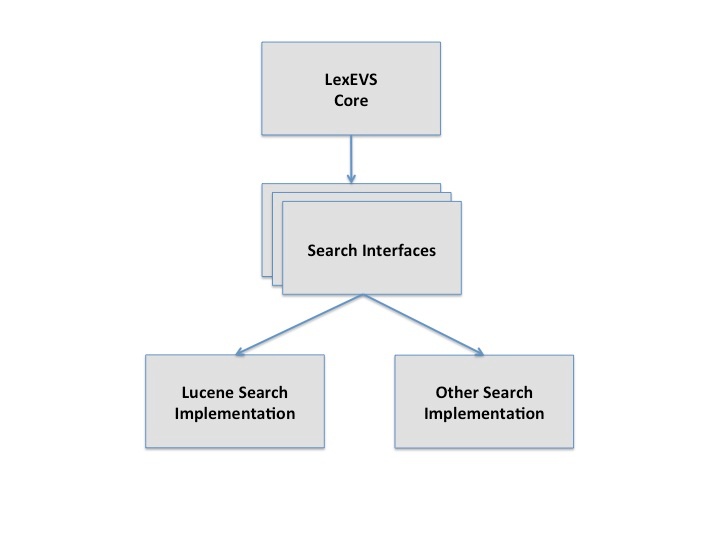 |
Page History
| Scrollbar | ||
|---|---|---|
|
| Panel | ||
|---|---|---|
| ||
Author: Craig Stancl, Scott Bauer, Cory Endle |
| Panel | ||
|---|---|---|
| ||
|
Goal
- This is a "best coding practice" - the search specific implementation of Lucene should not be embedded in the LexEVS code base. This work, whether it is completed or not will have no impact on the overall Lucene 5.0 implementation.
- The decoupling task will move the search specific code to an implementation of a new search interface. If the need ever arose to swap out Lucene for a different search engine, we would be able
- to create a new implementation of the search interface
- with the new search engine
Approach
- and not have to make changes in the LexEVS code base.
Recommendation
Approach
...
Design
In order to remove the Lucene references from the LexEVS core code base, we will design a new search API interface. We would then be able to create a specific Lucene implementation of this interface. If there was ever a need to substitute different search engine, all that would be necessary would be to create a new implementation of the search API interface for the new search engine. The LexEVS core code base would not be needed to be modified.
There are several classes that will need to evaluated when doing the actual implementation. These cases include code where Lucene objects are intermixed throughout LexEVS methods. (This is not an all inclusive list)
...
